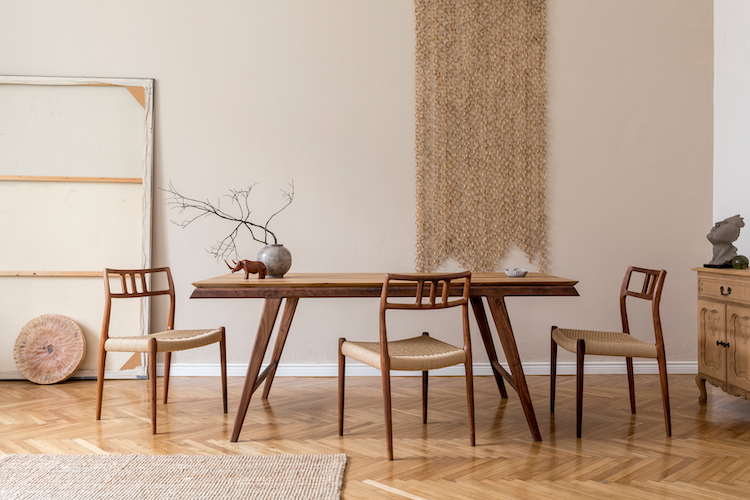From Typical to Modern: Find the Suitable Dining-room Table Legs for Your Style
While classic designs such as cabriole and transformed legs stimulate a feeling of timeless refinement, contemporary designs like hairpin and geometric choices present a chance for striking aesthetic rate of interest. As you consider these aspects, the concern continues to be: how can you effortlessly integrate these diverse leg styles to develop a harmonious dining experience?
Understanding Table Leg Styles
The variety of eating room table leg designs can dramatically affect both the aesthetics and functionality of the area. Each leg style adds special sensible functions and visual elements, satisfying varied layout choices and use needs. Comprehending these styles is important for picking the appropriate eating table that straightens with your overall indoor design vision.
As an example, conical legs supply a tidy, traditional look that can improve a space's beauty, while stand bases offer stability and make best use of legroom, making them optimal for smaller areas. Hairpin legs, a characteristic of mid-century modern style, present a commercial flair, enabling a ventilated, open feel. Likewise, trestle legs stimulate rustic beauty, giving robust assistance and a feeling of timelessness.
Wood legs can bring heat and texture, whereas metal alternatives typically share a streamlined, modern vibe. Eventually, comprehending table leg styles is vital for developing a cohesive eating location that reflects personal style while making certain usefulness and comfort.
Typical Table Leg Options
When picking dining area table legs, standard choices frequently symbolize timeless elegance and craftsmanship. These styles mirror an abundant heritage and a commitment to quality, making them perfect for those that value classic aesthetic appeals.
One of one of the most legendary standard leg designs is the cabriole leg, defined by its elegant rounded shape. This layout commonly includes ornamental carvings and is most commonly discovered in Queen Anne and Chippendale furniture. One more popular choice is the transformed leg, which boasts a collection of smooth, rounded shapes that provide a timeless appearance while keeping security.
In addition, the straight leg, while easy, offers a basic and sturdy structure that can mix seamlessly with a selection of tabletop designs. For those attracted to ornate describing, claw-and-ball feet legs stimulate a sense of majesty and can function as a magnificent prime focus in any type of eating space.
Last but not least, stand bases, although not purely legs, offer an alternate conventional choice that enables sufficient legroom and can be beautifully carved. Each of these standard leg designs adds to the overall atmosphere of a dining space, weding function with aesthetic charm.

Modern Table Leg Styles
Modern table leg designs use a varied variety of designs that highlight clean lines and ingenious materials. These styles usually focus on performance while working as striking prime focus within a dining space. Minimalist looks are widespread, with legs crafted from products such as metal, glass, and crafted wood, which add to a contemporary and airy feel.
One prominent style is the barrette leg, defined by its slim, conical framework that offers security without frustrating the table top (dining room table legs). This style is often found in mid-century contemporary furniture and can effortlessly complement numerous dining table forms. An additional fad is using geometric forms, where legs may handle asymmetrical or angular kinds, including visual interest and a touch of virtuosity

Mixing Designs for Special Spaces
Often, property owners seek to produce distinct eating areas that mirror their personal design by mixing different design components. This strategy enables the incorporation of varied appearances, causing a harmonious yet distinctive atmosphere. Pairing a rustic wooden table with streamlined, modern-day steel legs can develop an eye-catching contrast that raises the room's general appeal.
Furthermore, integrating vintage table legs with modern table tops can evoke a feeling of history while keeping a modern perceptiveness. Such combinations not just display individual taste yet additionally urge creative thinking, enabling look at this site house owners to curate a space that feels both personal and inviting.
Shade plays an important duty he said in this blending process; picking table legs that complement or comparison with the existing color pattern can enhance visual passion. For instance, whitewashed legs can soften the boldness of a dark table surface, creating a well balanced visual.
Tips for Choosing the Right Legs
Choosing the right table legs is important for attaining both capability and aesthetic allure in your dining area. Begin by taking into consideration the total design of your area. Conventional setups take advantage of legs that include intricate makings or turned layouts, while modern rooms may require streamlined, minimal designs.
Next, analyze the height and stability of the legs. dining room table legs. Common dining tables vary between 28 to 30 inches in elevation, so ensure the legs enhance this measurement for convenience. Furthermore, durable materials, such as hardwood or metal, can enhance security and long life
Assess the leg form also-- choices include directly, tapered, or pedestal styles. Straight legs supply a timeless look, while tapered legs can add a touch of sophistication. Pedestal bases supply adequate legroom and are suitable for smaller sized spaces.
Final Thought
In summary, selecting the suitable eating area table legs requires careful consideration of both contemporary and standard styles. By balancing leg style, elevation, and product with the total décor, a cohesive and inviting environment can be accomplished.
The range of dining space table leg designs can significantly influence both the aesthetics and performance of navigate here the space. Eventually, comprehending table leg styles is essential for developing a cohesive eating location that mirrors personal style while making sure usefulness and convenience.One of the most famous conventional leg styles is the cabriole leg, defined by its stylish rounded shape. Straight legs supply a timeless appearance, while conical legs can add a touch of style.In summary, selecting the ideal dining space table legs requires mindful consideration of both contemporary and traditional styles.
Comments on “The Impact of Dining Room Table Legs on Your Table's Overall Design”